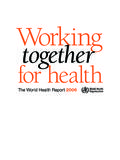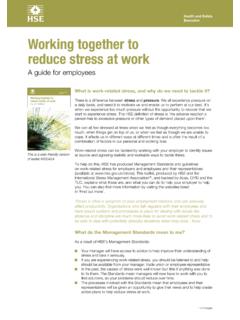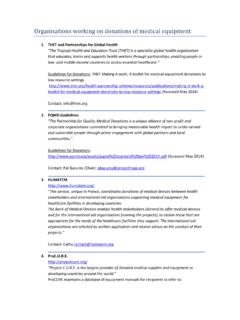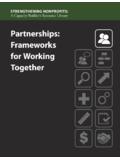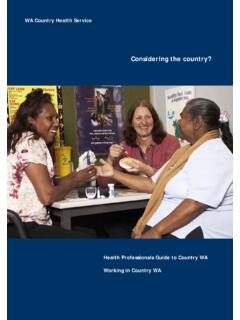Transcription of TO END BULLYING IN THE WORK- WORKING
1 Who is at risk?The health and Safety Executive (HSE)says lone workers are those who workby themselves without close or directsupervision. Three broad groups of workers are atrisk, those: WORKING alone on site; WORK- ing away from base; and s new guide, Workingalone: A health and safety guide onlone WORKING for safety representatives,offers a catch-all definition: A workerwhose activities involve a large per-centage of their WORKING timeoperating in situations without thebenefit of interaction with other workers or without supervision. Covered by the lawHSE s short guide to WORKING alonesays: Although there is no generallegal prohibition on WORKING alone, thebroad duties of the health and Safetyat work Act (HSW) and the Manage-ment of health and Safety at WorkRegulations (MHSW) still apply.
2 Therequire identifying hazards of the work ,assessing the risks involved, and put-ting measures in place to avoid orcontrol the risks. The guide adds that safety repsshould be consulted: It is important totalk to employees and their safety rep-resentatives as they are a valuablesource of information and advice. HSE says that establishing safeworking for lone workers is no differentfrom organising the safety of otheremployees. Questions HSE says should be an-swered by employers include: Can the risks of the job be adequate-ly controlled by one person? Is there a risk of violence? Are women especially at risk if theywork alone?
3 Are young workers especially at riskif they work alone? Is the person medically fit and suit-able to work alone? What training is required to ensurecompetency in safety matters? How will the person be supervised? What happens if a person becomesill, has an accident, or there is s guide adds that employersare also under a legal duty to provide: Facilities for first aid under the Healthand Safety (First Aid) Regulations Welfare under the Workplace ( health ,Safety and Welfare) Regulations Suitable equipment and training inits use under the Provision and Useof work Equipment Regulations andthe Lifting Operations and LiftingEquipment duties to record accidents,injuries and violent incidents alsoapply.
4 For all jobs, the laws that applyto other exposed workers apply to thelone worker - confined spaces, electrici-ty, VDU and other laws, for measuresWorking together:Eliminating the hazards of WORKING alone,a guide fromthe Canadian public service unionCUPE, says a number of additionalsafeguards can be used:Buddy system:A second person is as-signed to work with the first, becausethe job cannot be done safely : Telephones andwalkie-talkies can be a lifeline in some and visual monitors: Ifintroduced through proper negotia-tion these can offer some alarm security systems (PASS)can also help.
5 Alarms:Many counter, service andcare workers have access to panic but-tons. A range of other emergency,personal distress and violent attackalarms are alone TUC Hazards at Workguide givesthese pointers to safety reps. Don t allow cost cutting exercises toput members at risk by forcing themto work alone. Ensure risk assessments identify loneworking on and off site and poten-tial hazards. People should work in pairs at diffi-cult or out the way sites includinghome and community visits. Safecompletion of jobs should be reported. Records of staff whereabouts shouldbe kept. Information on high risk geographi-cal areas or jobs should be given tostaff, particularly new members.
6 TheCommunication Workers Union(CWU) has insisted that postal andtelecom workers work in pairs inareas known to have a high risk ofviolence. Personal alarms or two way radiosshould be provided where appropri-ate. NATFHE has negotiate rapealarms for women workers workingoutside normal hours at colleges. Re-organise the way jobs are done toprovide a safer system of work . Review procedures regularly to makesure they are WORKING . The necessity for handling cash ordangerous materials should be accidents, near misses, andincidents of violence should be record-ed and studied at regular intervals toprevent further publicationsWorking alone in safety.
7 Free pamphlet, (rev).COSHH and the peripatetic worker. Free leafletHS(G)77 1992. Homeworking: guidance for employers and em-ployees on health and Leaflet, (G)226. Single copies free. pack of also published free leaflets and guidance onother hazards that may apply - confined spacework, electricity regulations, violence at work , andrisk from HSE Books, PO Box 1999, Sudbury,Suffolk, Co10 6FS. Tel: 01787 : 01787 313995. Web: publicationsMany unions, including UNISON, The CharteredSociety of Physiotherapy (CSP), NATFHE, CWU,GMB and MSF have produced guides on workingalone. Contact your union for including BIFU and MSF have producedguidelines on teleworking, including agreements,equipment, insurance and mortgage questions,heating and phone bills, health checks and com-munication.
8 WORKINGALONEPROTECTING SOLITARY WORKERS FROM THE RISKS OF THE JOBHAZARDSFACTSHEET72 We live in a 24:7 world. Care workers, shopworkers,maintenance workers, most jobs can require people to be left alone, isolated. It can be dangerous. Workers have beenmurdered. health , postal, emergency and shopworkers are frequently attacked. Injured workers have been undiscoveredfor hours. The law should protect you .. make sure it HAZARDS 72 2000 HAZARDS PUBLICATIONS LTD PO BOX 199 SHEFFIELD S1 4YL CENTREPAGEHAZARDSA busive customers, road rage, violence, robbery, road accidentsAbusive/violent patients/clients/relatives, lifting hazardsElectric shocks, trips, cuts, falls, accidents, confined spacesAbuse, violence, robbery, traffic hazards, accidents, biological hazards, falls,burns, toxic exposuresAnimal attack, weather, machinery accidents, chemicalsFalls, injury, lifting, injuries from garbage handling, infections, chemicals, violence, robberyChemical over-exposure, biological agents.
9 Physical hazards, firesAnimal attack, abusive customers, violence, robbery, accidentsLifting injuries, abusive patients, drug handling, robbery, violenceRobbery, violence, abuse, vehicle fumesRobbery, violence, abuse, lifting injuriesConfined spaces, toxic gases, biohazards, slips and fallsAbuse, road rage, violence, robbery, road accidents, falling asleep at the wheelTO END BULLYINGIN THE WORK- Home aloneHomeworkers are particularly at riskfrom hazards and the lack of supportand procedures to deal with them. Normal work systems rarely takeaccount of the presence of childrenand babies in the workplace.
10 Hazards include:Stress and long hours,trying to fit inwork and family at home withoutchild care provision, adequate payand with social and professionalisolation;Machinery that is noisy,not properlymounted or unsuitable for the typeof electricity supply in the can also be labelled a noisy neighbour and face action by local authority nuisanceinspectors. Chemicalsand glues that may beflammable or toxic or give off soldering electroniccomponents, for example, have beentold to sit by an open window, whichcan just mean the draught carriesfumesright into their breathing and dusts that can causebreathing difficulties or allergiesdue to poor ventilation.


